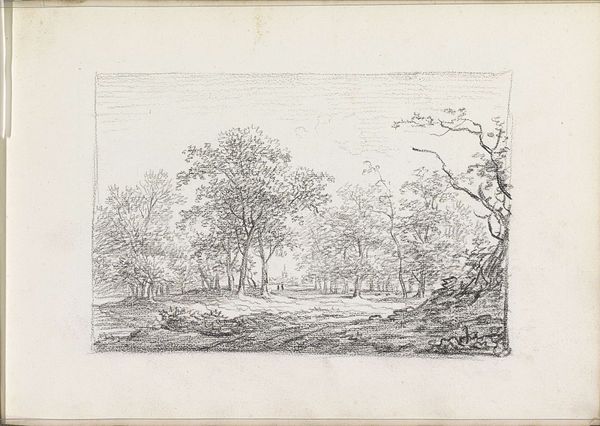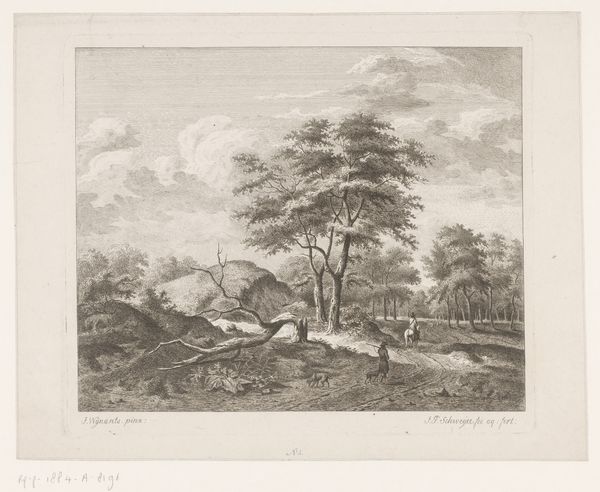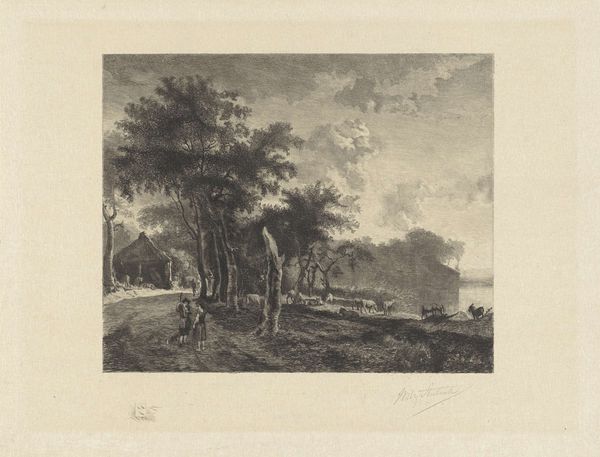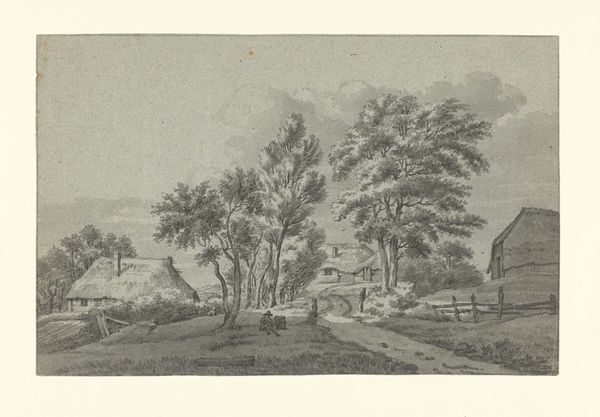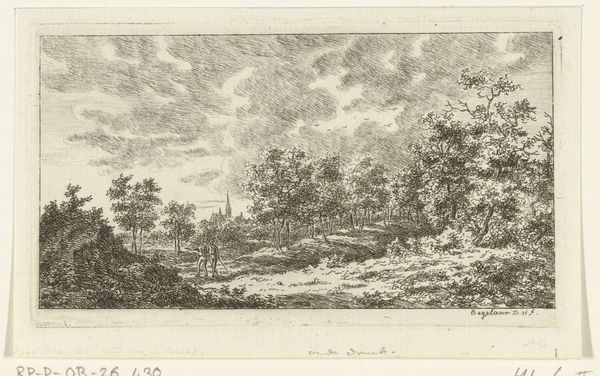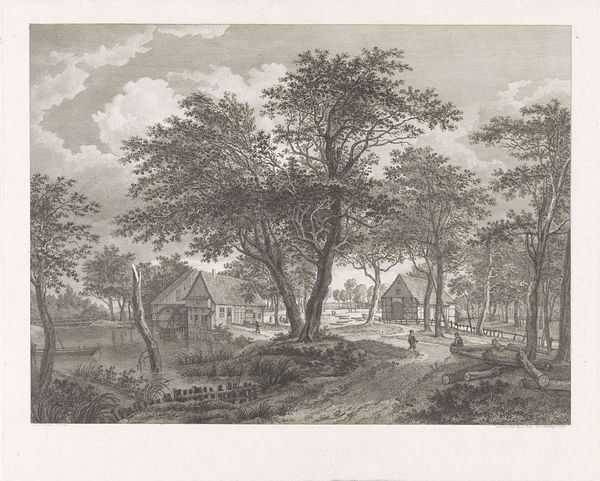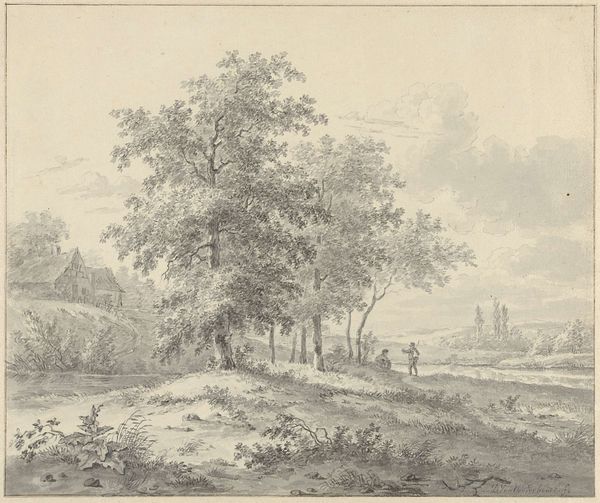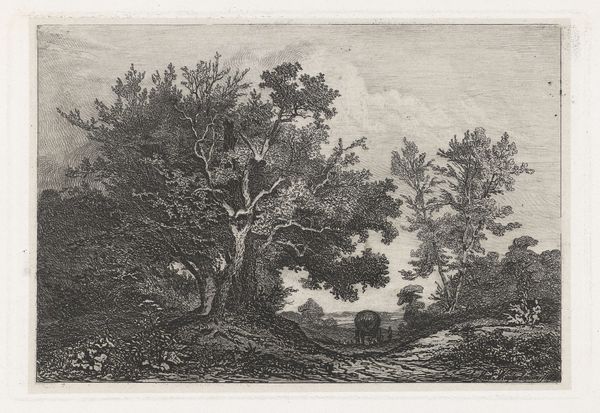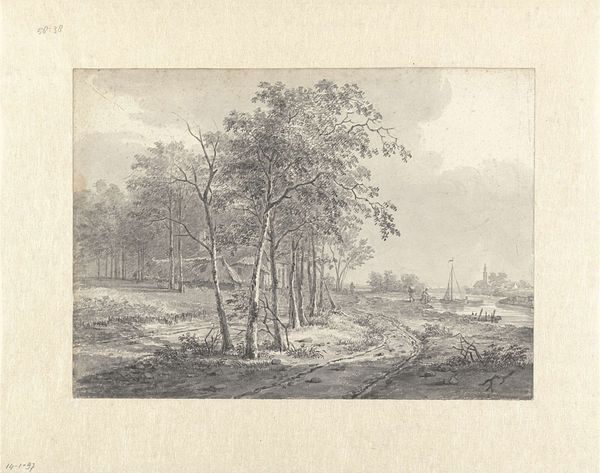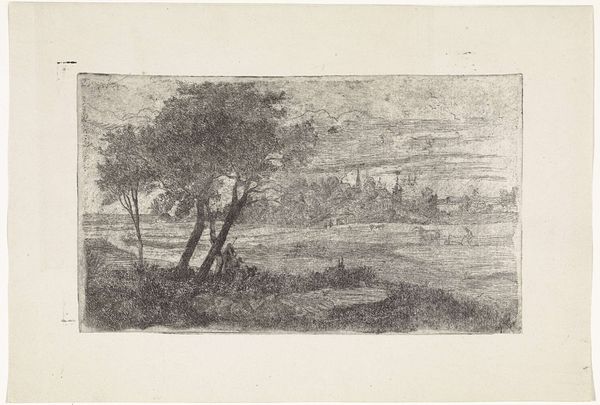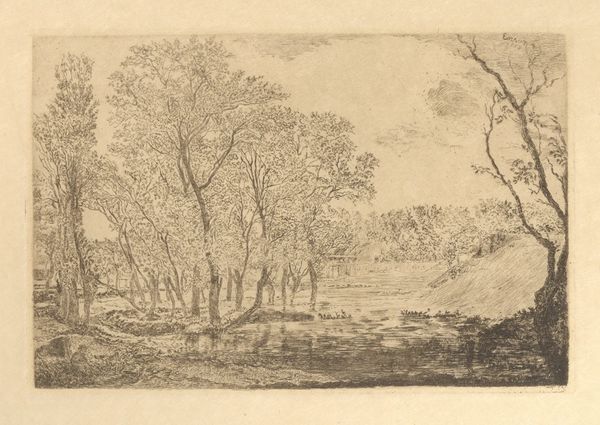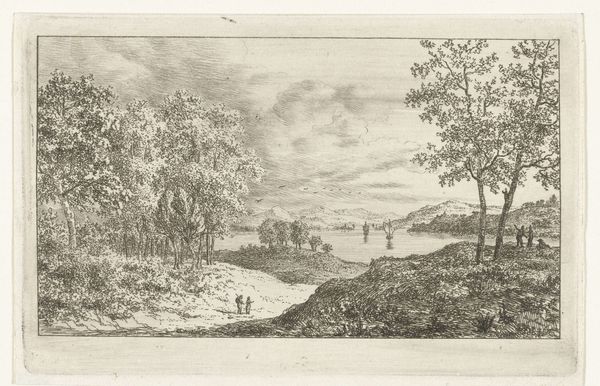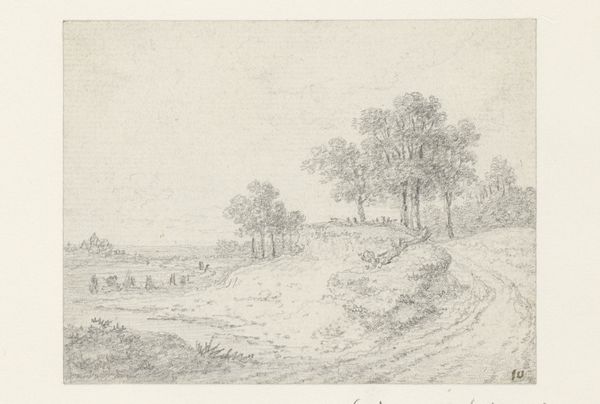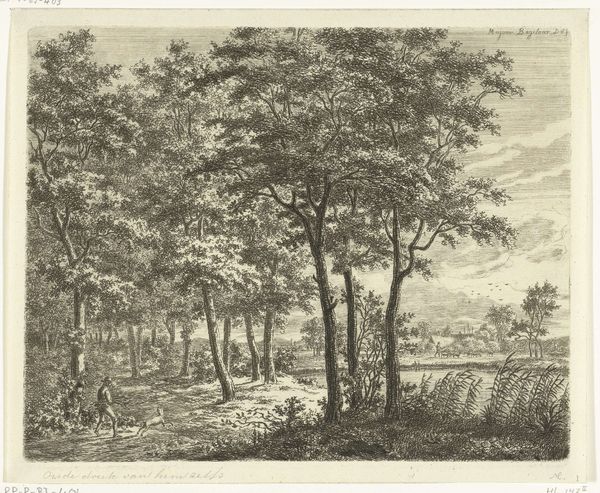
print, etching
#
dutch-golden-age
# print
#
etching
#
landscape
#
realism
Dimensions: height 258 mm, width 342 mm
Copyright: Rijks Museum: Open Domain
Curator: Here we have "Landscape with Watermill," created between 1888 and 1891 by Willem Steelink. It's an etching, giving it that lovely detailed line work. Editor: My first impression is the starkness, the high contrast. The landscape feels so precisely rendered, it almost borders on documentary photography despite the clear handmade process of printmaking. Curator: Absolutely. The late 19th century saw the rise of realism, a response against Romanticism. Artists sought to depict the world as they saw it, without idealization. And printmaking, with its accessibility, became a medium to disseminate these views widely. Editor: Right, it’s an etching, so the lines are bitten into the plate with acid. I imagine Steelink repeatedly immersing and stopping out areas to get these layered tonal effects. Did these landscape prints often circulate outside the traditional gallery system? Curator: They certainly did. Think about illustrated magazines, journals, and even advertisements. Printmaking democratized art viewing and shaped public perceptions. Landscapes like these became a potent symbol of national identity too. Editor: I see that now. The watermill wasn’t simply picturesque; it’s also an important symbol of the agricultural labor, perhaps the working class itself. And it's so central to Dutch identity and the continuous manipulation of the landscape for use. Curator: Exactly, this etching is a testament to the Netherlands’ struggle against water, an ongoing cultural project. By the way, it also highlights the inherent limitations and labor tied into production with the intaglio print process. It's so detailed for such a small print, its craft itself demands admiration. Editor: The choice of medium then strengthens that point—we get a double whammy of commentary both in what's shown and how its been rendered. The artist gives an aesthetic nod to process-based knowledge and craftsmanship that shaped his environment. It is thought-provoking. Curator: Seeing it now, the work also illustrates the increasing public appetite for representations of a familiar landscape in a readily reproducible format. Printmakers and the institutions showing them took on the function of informing the public and driving cultural memory. Editor: Overall, it presents a complex picture when considering materiality alongside socio-political intent. The print highlights a period of intense agricultural industrialization, while also nodding to its own process within production, demanding contemplation around what and how its depicted, or created. Curator: I agree. These dialogues open a door, a viewpoint for further exploration for everyone.
Comments
No comments
Be the first to comment and join the conversation on the ultimate creative platform.
